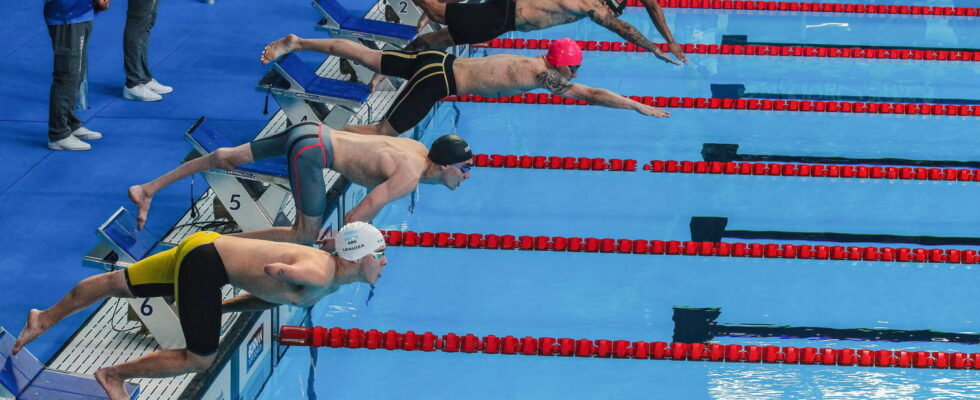Para swimming is one of the most popular events at the Paralympic Games.
Para swimming is one of the flagship disciplines of the Paralympic Games along with athletics, and one of those that distributes the most medals. We find the four strokes, crawl, backstroke, breaststroke and butterfly as specialties but also in combined four strokes, and three strokes for certain classifications (without the butterfly). Present since the Rome Games in 1960, it is certainly one of the most practiced Paralympic disciplines in the world, because it does not require any special equipment. In addition, prostheses are prohibited in competition. It is also open to all types of disabilities.
The para swimming events are much the same as those for swimming at the Olympic Games, with a limitation on distance. Indeed, there are no events longer than 400m in the Paralympic programme, although the 800m and 1500m are featured in some other international competitions.
Depending on the disability of each athlete, certain rules may be adapted. Thus, in the blind and visually impaired classifications, an assistant may be present at the end of the pool to indicate to the swimmer the end of the length using a pole with a foam tip. In addition, some athletes who cannot remain standing on the starting block may launch themselves directly into the water, or be held by assistants. Finally, in the blind and visually impaired classifications, all athletes must wear opaque swimming goggles in order to ensure fairness for all. The disability class of each athlete is determined by a certified health professional and allows them to compete in the appropriate category.
Classifications for para swimming
As with para athletics, there are many classifications for para swimming, specific to each type of disability. Three acronyms distinguish the different types of swimming:
- S: “Swimming” means freestyle, backstroke and breaststroke races.
- SB: “Swimming breaststroke” means breaststroke.
- SM: “Swimming Multi” means multi-stroke events (three or four strokes depending on the classification).
Within each type of swimming there are distinct classifications:
- S1 to S10/SB1 to SB9/SM1 to SM10: concerns physical disabilities, with 1 being the highest degree of functional loss. Each class contains swimmers with different disabilities, but their performance abilities in the given stroke are considered to be equivalent.
- S/SB/SM 11 to 13: classes designating blind and partially sighted swimmers
- S/SB/SM 14: category designating intellectual and psychological disabilities. Athletes in this category have difficulty learning or memorizing a technique, or reaction times that impact performance due to an illness. This must be diagnosed before the age of 18.
The para swimming program
Para swimming will be held from August 29 to September 5 at the Paris La Défense Arena.
